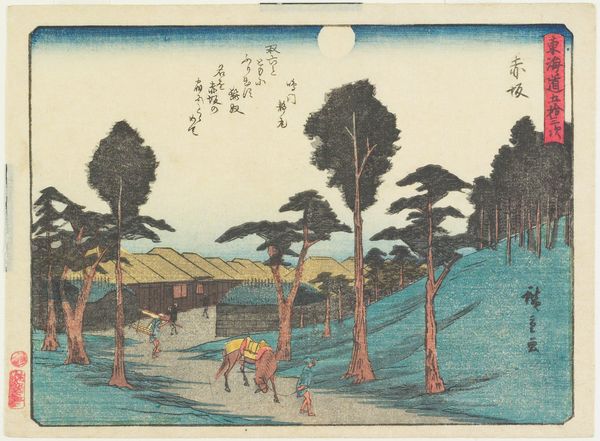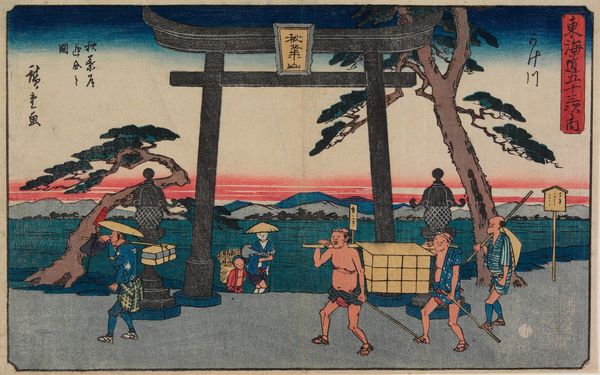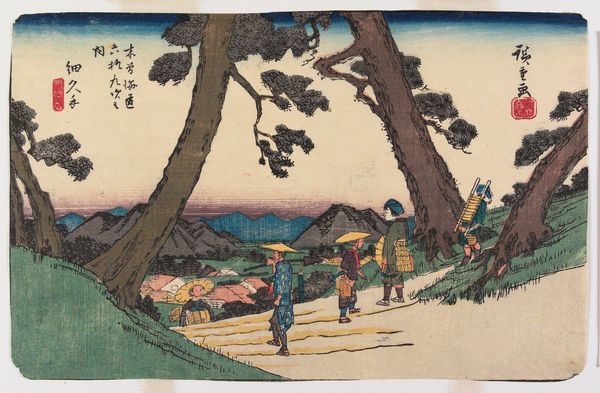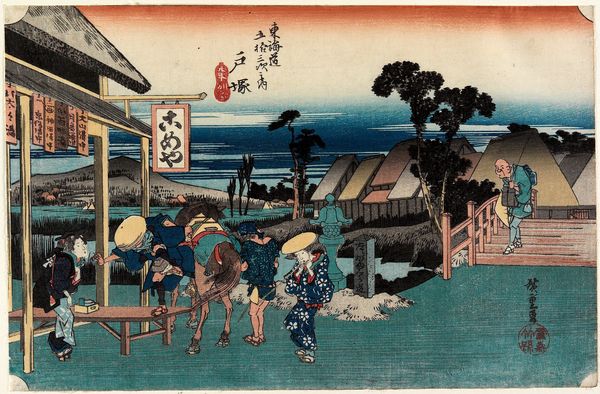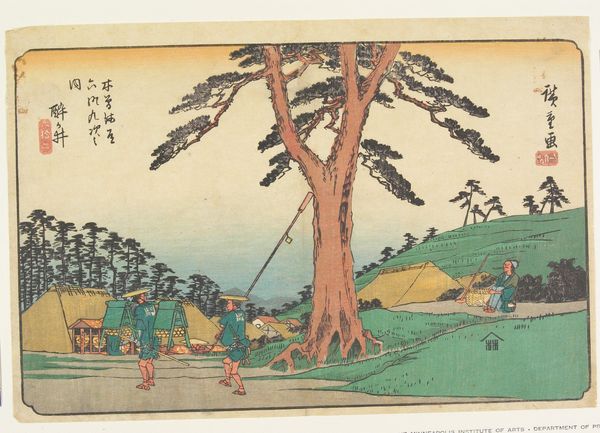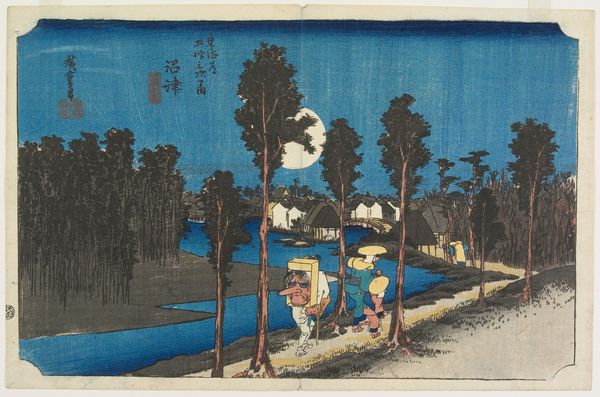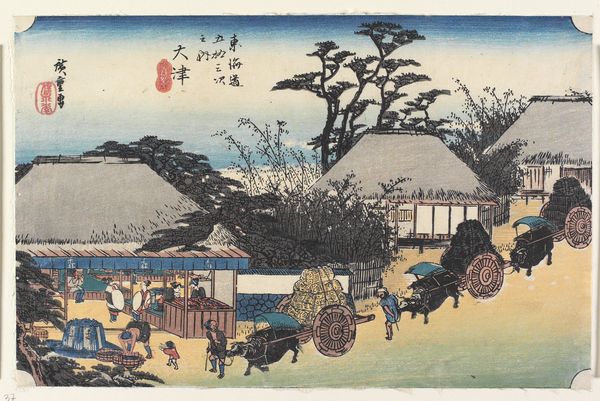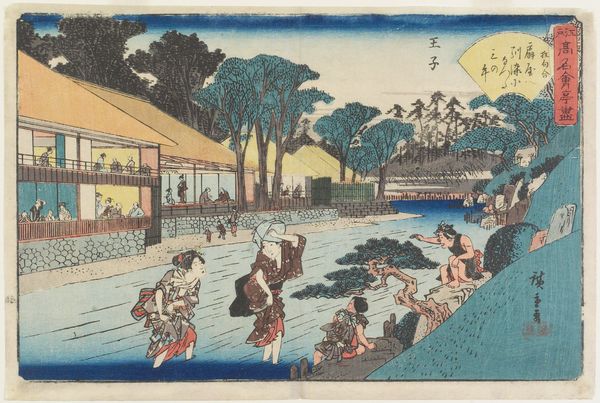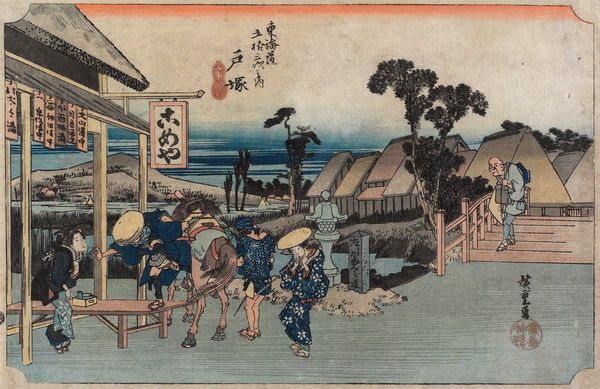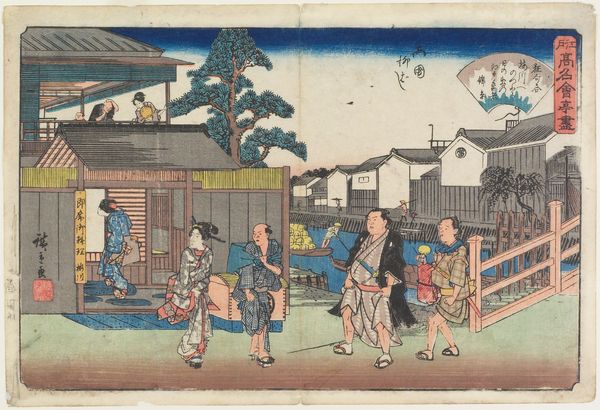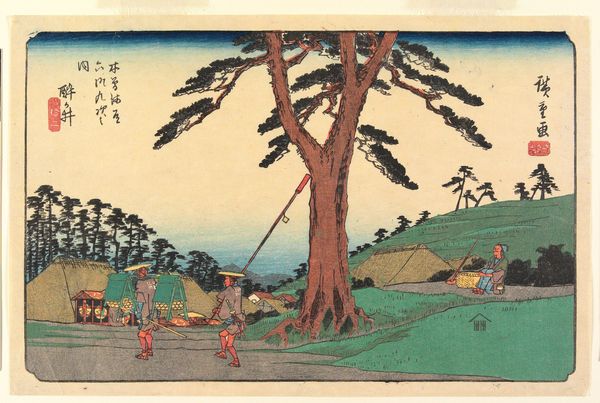
print, ink, woodblock-print
# print
#
asian-art
#
landscape
#
ukiyo-e
#
japan
#
ink
#
woodblock-print
#
genre-painting
Dimensions: 8 1/2 x 13 7/16 in. (21.6 x 34.2 cm) (image)8 1/2 x 13 7/16 in. (21.6 x 34.2 cm) (sheet)
Copyright: Public Domain
Editor: This is Utagawa Hiroshige's woodblock print "No. Futakawa," dating from 1837 to 1844. It depicts a roadside scene that feels really...ordinary, almost like a snapshot. I'm curious, what layers of meaning or cultural context might we be missing by viewing it today? Curator: The beauty of ukiyo-e lies in its seeming simplicity. But remember, this print comes from a specific moment in Japan's Edo period, a time of relative peace but also rigid social structures. Genre scenes like this, depicting everyday life along the Tōkaidō road, were hugely popular, connecting urban audiences with idealized images of travel and the countryside. Editor: So, it's less a realistic depiction and more of a curated experience, shaped for consumption? Curator: Precisely. The Tōkaidō wasn't just a road; it was a carefully managed space, controlled by the shogunate. Prints like this helped construct a national identity, showcasing standardized imagery, safe travel, controlled environments – and a subtle projection of power. Look at the figures: they’re archetypes more than individuals. How does that affect your initial impression? Editor: I see what you mean. The people seem almost staged, which emphasizes the idea of a controlled narrative. This wasn't just about showing the road, it was about showing a certain image *of* the road, one approved, even created by the authorities. Curator: And how do you think the placement of these prints within the domestic sphere shaped viewers' understanding of travel and the political climate? Editor: That's fascinating! I hadn't considered how a simple image could carry such weight and subtly reinforce political narratives within society. It shows me that we shouldn't take artworks at face value; context really is everything.
Comments
No comments
Be the first to comment and join the conversation on the ultimate creative platform.
